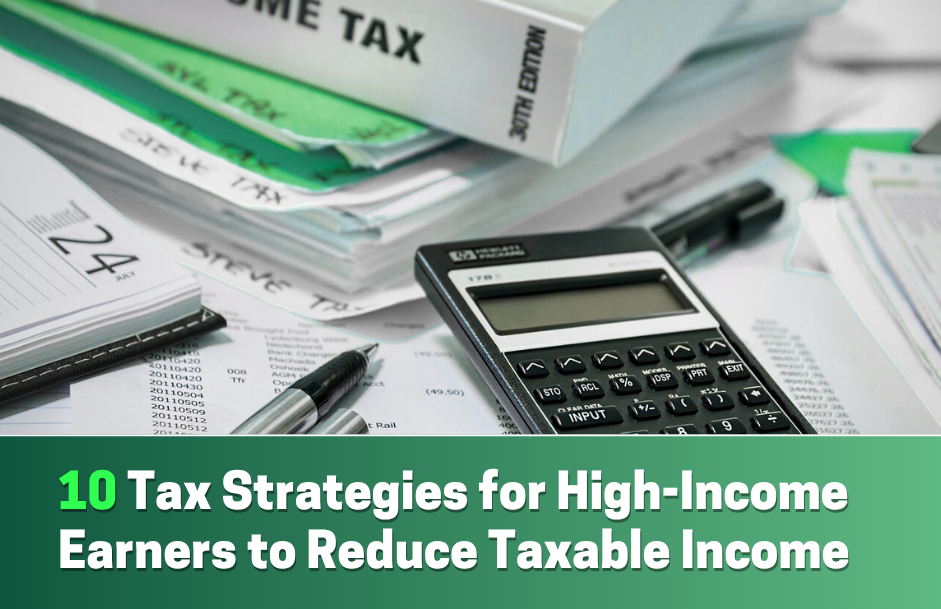
Many people like to donate to charity. Often, people will write checks or make an online donation to a variety of charities throughout the year. Since most people now take the standard deduction instead of itemizing their deductions on their tax return, they usually don’t get the maximum bang for their buck by donating in this fashion.
Other ways to donate in a more tax-efficient manner include:
- Donating appreciated stock or real estate
- Donating from your IRA after age 70½
- Donating now but choosing the specific charity later
- Donating after death
Donating Appreciated Stock
If your brokerage account contains stocks, ETFs or mutual funds that have grown in value, the tax cost to sell them may be high. Often, these assets may be ideal candidates to use to fund your charitable goals. When you give a charity appreciated stock, ETFs or mutual funds that you have owned for more than a year, the value of the asset at the date of donation is added to your other charitable gifts that year as an itemized tax deduction. Depending on the amount, it may allow you to itemize your deductions that year.
The amount of the deduction is limited to 30% of your adjusted gross income (line 11 of your 2023 1040 form). Any additional deduction carries forward to a future tax year.
The benefits of this strategy are that you avoid having to pay capital gains taxes on the growth and you may get the benefit of a tax deduction. The charity can sell the assets tax-free, and all the proceeds are passed to them.
Donating From Your IRA
This is my favorite strategy for charitably minded clients over age 70½. Known as the qualified charitable distribution (QCD), this type of donation is not reported on your tax return at all. To understand how it is tax efficient, you must understand that IRA balances in retirement are effectively income tax bombs.
All income withdrawn from an IRA must be taxed at ordinary income tax rates. Starting at age 73, you must be taxed on a portion of your IRA each year (note there is no requirement to remove it from your investments, just to remove it from your IRA and pay taxes on it). This forced taxation of your IRA is known as a “required minimum distribution,” or RMD.
A QCD allows you to transfer up to $100,000 per year from your IRA to the charity and never be taxed on it. Even better, it reduces your income because it counts as your RMD for the year.
So, if your RMD for 2023 is $60,000 and you transfer $60,000 to charity from your IRA, you will not be taxed on the $60,000. You also will not receive a tax deduction on the transfer, so this strategy MAY be less desirable than transferring appreciated stock. As we discussed above, when you transfer appreciated stock, you get a tax deduction for the value of the stock transferred AND avoid paying capital gains on the sale of the stock.
You aren’t limited to the amount of your RMD – you can transfer up to $100,000 each year to charity with this strategy. By reducing the amount of your IRA, you are reducing your future RMDs, since the calculation of your RMD is your previous year’s value on December 31 divided by the amount that corresponds to your age from the IRS table here.
This giving option is only available to individuals over age 70½. Also, watch out at tax time – your financial institution will still issue you a 1099-R for the amount removed from your IRA. Make sure you tell your tax accountant that you made the QCD. The amount you report on your taxes should be the net of the QCD.
Note that Congress changed the law for RMDs, so they now occur at age 73 instead of age 70½. They left the age at which you can make a QCD at 70½.
Donate Now, Choose the Charity Later
Another charitable giving strategy allows you to donate to an investment account now by choosing the specific charity it will eventually go to later. This is known as a donor advised fund (DAF).
This way lets you bunch your charitable contributions into one year (resulting in a possible tax deduction) and then make the specific grants to one or more charities in future years.
The DAF is a separate account with separate fees. It is legally separate from you, which is why you get a tax deduction in the year you transfer assets to the fund. You can transfer appreciated stock and avoid paying the capital gains tax (similar to giving directly from your brokerage account, explained above). Once the assets are in the DAF, they can be sold tax-free.
Then, whenever you want (same tax year or different tax year), you can direct the DAF to make gifts to the charities of your choice in the amounts you choose.
Donating After Death
There are many ways to donate to charity after you have passed away, including:
- Writing a bequest in your will or trust
- Using a beneficiary form to name a charitable beneficiary on your IRA, employer-sponsored retirement account (such as 401(k), TSP or 403(b)) or investment account
Using a bequest in your will is one of the least efficient ways to give to charity. Anything that passes through a will is subject to an expensive process called probate, which reduces your estate value.
A more tax-efficient option to give after death is to use a very easy, very inexpensive way known as a beneficiary form. You can add a beneficiary to all kinds of financial accounts, including bank accounts, a brokerage investment account, IRA, TSP, 401(k), life insurance, etc.
The most tax-efficient way to give after death is to use a beneficiary form to name a charity (or your DAF!) as a beneficiary of your IRA, TSP, 403(b) or 401(k). You can leave any amount, such as 100%, 50%, 25% or 10%, to the charity, and you can change your mind and file a new form with the financial institution at any time at no cost.
A beneficiary designation supersedes your will or trust, and assets passed via designated beneficiaries are not subject to probate.
Gifts to charity have the added benefit of reducing your estate taxes (if they apply to you).
There are many ways to give in a tax-efficient manner. The strategy that works best for you will be determined by an analysis of your specific financial and tax situation. If you need assistance with your tax planning or retirement planning in general, please reach out to our team.
Disclaimer: This is not to be considered investment, tax, or financial advice. Please review your personal situation with your tax and/or financial advisor. Milestone Financial Planning, LLC (Milestone) is a fee-only financial planning firm and registered investment advisor in Bedford, NH. Milestone works with clients on a long-term, ongoing basis. Our fees are based on the assets that we manage and may include an annual financial planning subscription fee. Clients receive financial planning, tax planning, retirement planning, and investment management services and have unlimited access to our advisors. We receive no commissions or referral fees. We put our client’s interests first. If you need assistance with your investments or financial planning, please reach out to one of our fee-only advisors. Advisory services are only offered to clients or prospective clients where Milestone and its representatives are properly licensed or exempt from licensure. Past performance shown is not indicative of future results, which could differ substantially.



